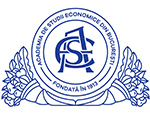
Recent studies suggest that the level of pollutants emitted into the atmosphere can be significantly reduced by employing environmental policies and strategies regarding the use of renewable energy sources, alternative fuels, high energy efficiency plants and equipment, as well as the implementation of a program for afforestation and creation of green spaces for CO2 absorption, retention of fine powders and release of oxygen into the atmosphere. The current paper analyses the above-mentioned environmental strategy, starting from the assumption that the development of an afforestation program contributes to the retention of fine powders and implicitly to the release of a greater quantity of oxygen in the atmosphere, being the starting theory tested through an econometric model. Through this econometric model, the relationship between air quality and the surface of the land on which artificial regeneration was performed will be studied, using panel data for a number of 41 counties in Romania. The results of this analysis highlight that artificial forests have a positive impact on air quality, but the effects are visible after a certain time lag because forests are slowly renewable resources. For these reasons, it should be emphasized that the afforestation program must be doubled by the rational exploitation of this extremely precious resource, the forest, combined with the reduction of emissions of polluting elements. As a consequence, significant air quality improvement can be achieved.








